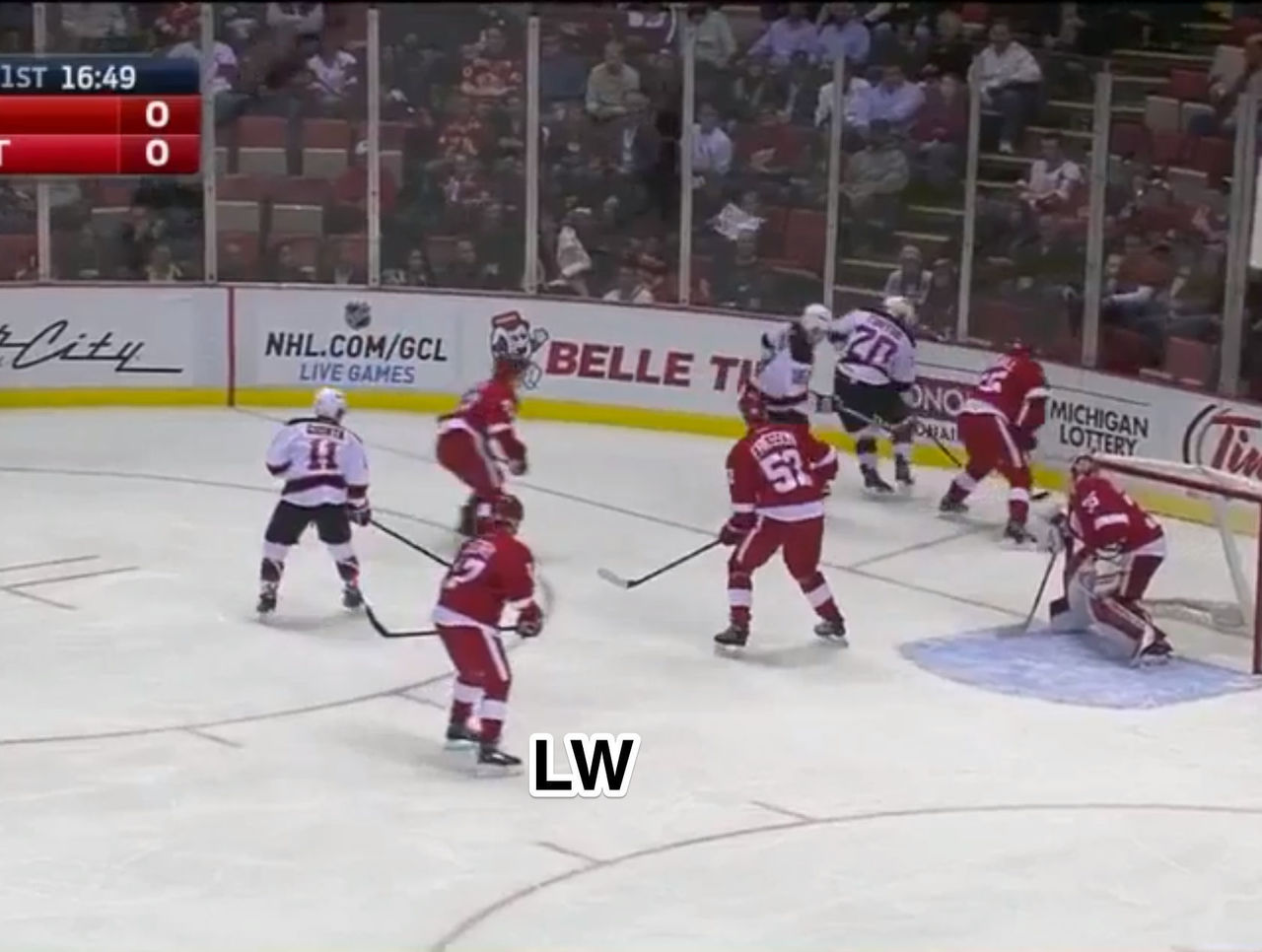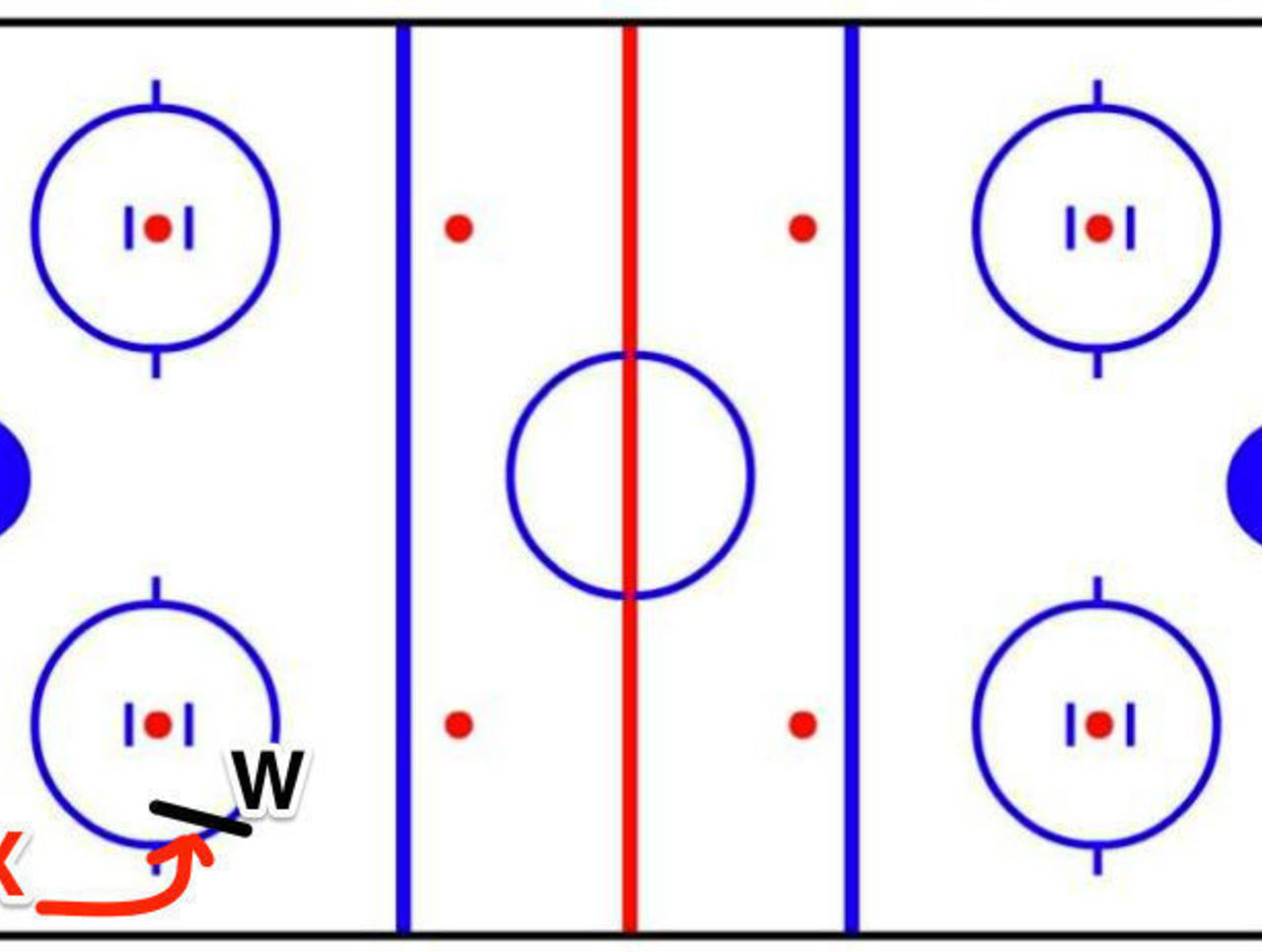Mike Babcock explains why the defensive role of wingers has had to change

Playing wing has always been the easiest position on the ice from a defensive standpoint. Wingers were made responsible for the opposing D-men in their D-zone, and there wasn’t much more to it. It was man-on-man, cut and dried, simple.
While playing wing remains hockey’s easiest defensive position - both D-men and centermen still do considerably more around their goalkeeper - the role of the winger has changed significantly, becoming more involved and more complex. No longer are most teams content to let wingers stand in place and shut their brains off. Defense wins championships, so coaches are evolving with hockey to make better use of those extra warm bodies.
The biggest change is that they're now asked to sag much lower in the zone.
The weak side winger can help provide a layer in front of the net if the defense gets broken down in the corner. You’d rather see the D-man at the point left alone than let a guy walk into the slot clean. If the puck get moves up to the point, that help winger can skate out in the shooting lane, and suddenly the puck is back on the outside of the real danger zone.

Wingers are also now asked to stop players from cutting to the middle at the top of the circle, an area cycling players have tried to exploit when D-men are in man-on-man.

It sounds obvious, but in the past the D-man has been left to keep the guy on the paint. Having that help from the winger allows him to get into the guy a bit more, and increases his odds of creating a turnover. In a nutshell, they don’t want wingers mindlessly covering an area of ice, they want them influencing offensive players.
Again, if the puck goes to the strong-side winger's D-man as he slides lower to help, he can front the shot in the lane. What that means is, a winger is now constantly triangulating, keeping himself between the puck and his D-man, and ideally between the net and his D-man. He’s also being asked to make the decision to drop down and help when things start to fall apart, so he’s constantly shoulder checking his guy and the play.
What happens when you fail to triangulate well? He’s Andrej Nestraisil of the Detroit Red Wings likely not endearing himself to Mike Babcock.
He's trying to be involved, but he gets caught out wide, which means he has neither stopped the pass from getting to his guy, nor stopped the ensuing shot. You'd like to see him pull away from the wall, and play that a bit softer.
When they expanded the offensive zone, that job became more difficult.
One of hockey’s best coaches is Detroit’s Mike Babcock, who was an early adopter when it came to getting his wingers involved on D. Here’s how he described his philosophy on wingers to me earlier this season.
I want them involved. When you think about it, when I played the neutral zone used to be bigger, and the end zones were smaller so you could just stand next to your guy. Today what you gotta do is find your D-man and cut off the top. And from a low sagged position, otherwise there’s too much room. So they made it way harder, wingers used to be able to sleep, they could pick up their guy coming out of the offensive zone and take the guy back, they didn’t have to do anything. Now, you gotta compress the zone, you gotta make it smaller, you gotta give the offense no time and yet, you gotta find a way to cut off the top, and if you don’t, you gotta find a way to get in the shooting lane, so the job of the winger is way harder than it was.
I hadn’t heard the phrasing “cutting off the top,” so I asked him if he was describing what I diagramed above - stop the offensive player from cutting in at the tops of the circles. ...Not so much.
I want him to do that, that’s why he’s sagged low, but when I say “cut off the top,” there can be no direct passes from the puck to the top man, you have to be in a lane to cut off the top. So I say, find the D, make the zone small, cut off the top.
“Make the zone small” is an adjustment almost all coaches today have made to avoid giving forwards too much room.
Playing center and defense are still the more difficult positions, but as the game evolves, the winger is taking on a bigger chunk of the defensive burden.